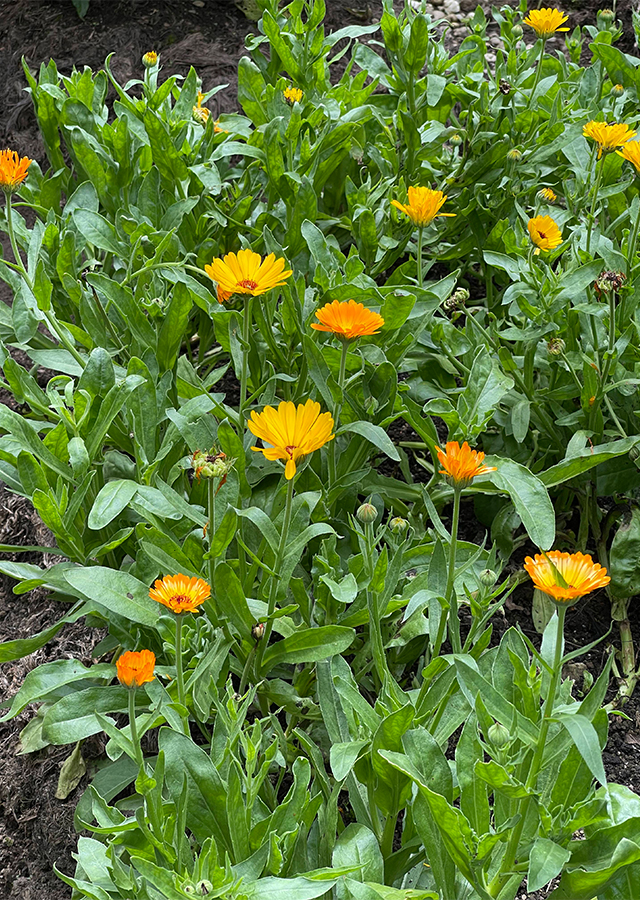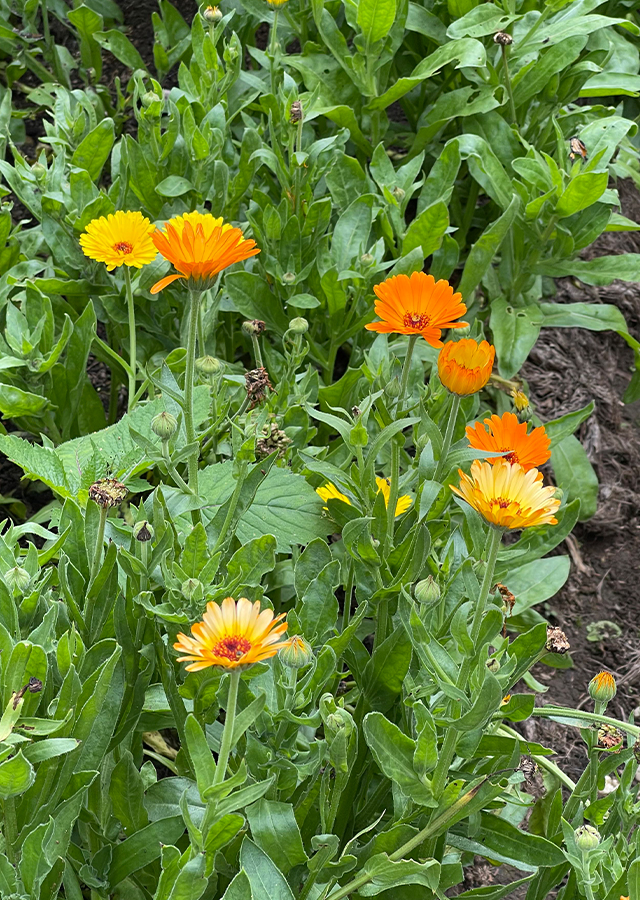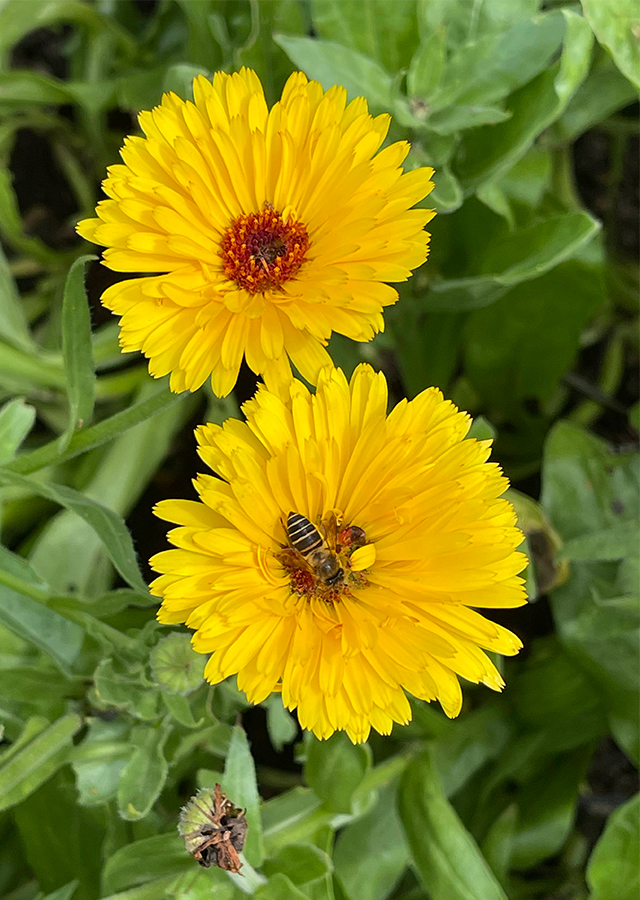Traditional Herbs from Calendula officinalis
treating_smallpox
- Pick a few calendula flowers and wash them until clean.
- Boil until boiling.
- Let it warm/cool.
- Strain then drink.
What is Calendula officinalis Looks like??



Parts of Calendula officinalis that could be used
- Leaves
- Flowers
Calendula officinalis Distribution
Calendula officinalis is a flowering plant from the Asteraceae family found in Central and Southern Europe, West Asia and the United States. This plant is widely planted as an ornamental plant, because it has flowers with beautiful colors and shapes. It is one of the aromatic herbal plants used in the traditional Ayurvedic medicine system, and has been used for a long time. Calendula has a wide variety of chemical constituents that exert many pharmacological effects. The flowers are popularly used to make a tea that is believed to soothe an irritated digestive system. However, this herb may not be safe for pregnant women, as it may increase the chance of miscarriage. Calendula has also been widely used in around 200 cosmetic formulations, namely in cosmetics such as creams, lotions, shampoos. Apart from its benefits as an ornamental plant, medicinal plant and ingredient in cosmetic products, it is known that calendula produces essential oils which are thought to repel insects.Agroecology of Calendula officinalis
It prefers fertile, moist, well-drained soil in full sun to semi-shade.
Morphology of Calendula officinalis
- Angled, hairy and dense stems.
- Leaves are fragrant, green, unifoliate, lance-shaped to oval, measuring about 10-20 cm long and 1-4 cm wide, lower part spatulate. Leaf venation pinnate, margin serrate or toothed leaves, pointed leaf tip (acute), obtuse (obtuse).
- Aster-like flowers, with bright yellow to orange marginal flower heads old. The crown (corolla) is oval spatulate, the flower corolla is rounded, tridentate at the top, 1.5-2.5 cm long and 4-7 mm in diameter, with tubular florets 5 mm long.
- Dry fruit with brown thorns. golden and shaped like a crescent. Botanically classified as an achene.
Cultivation of Calendula officinalis
Plant propagation through seeds.
Calendula officinalis, more details :
Chemical Content of Calendula officinalisEssential oils (α-copaene, α -ionone, α -humulene, geranylacetone, �'-muurolene, β-ionone, ledene, α -muurolene, �'-cadinene, δ-cadinene, α-cadinene , α-calacorene, caryophyllene oxide, copaen-4-α-ol, β-oplopenone, viridiflorol, ledol,1,10-di-epi-cubenol, 1-epi-cubenol, epi-α-muurolol, α-cadinol, and cadalen), tannins , saponins, triterpenes, triterpenoids, esters, flavonoids (quercetin, isorhamnetin, isoquercetin, isorhamnetin-3-O-β-D-glycoside, routine, isoquercitrin, neohesperidoside, isorhamnetin-3-O-neohesperidoside, isorhamnetin-3-O-2-rhamnosylrutinoside, isorhamnetin-3-O-rutinoside, quercetin-3-O -glucoside, quercetin-3-O-rutinoside, narcissin, calendoflaside, calendoflavoside, and calendoflavobioside), steroids, carotenoids (lutein, zeaxanthin, beta-carotene), quinones (plastoquinone, phylloquinone, α-tocopherol, and ubiquinone), coumarins (scopoletin, umbelliferone, and esculetin), terpenoids, amino acids (alanine, arginine, aspartic acid, aspargine, valine, histidine, glutamic acid, leucine, lysine, proline, serine, tyrosine, threonine, methionine, and phenylalanine), and polysaccharides (rhamnoarabinogalactans and arabinogalactans).
Benefits of Calendula officinalis
Heals wounds and cases of burns, various dermatological lesions, diaper rash, skin tumors, skin damage, deals with blood purification, prevents infections, controls seizures and prevents fungal growth, eye wash, medicine for gastrointestinal diseases (including ulcer swelling), worm medicine , inflammation of the oral mucosa and pharynx, nervous disorders, measles and smallpox, jaundice, constipation, suppression of menstrual flow, external varicose veins. Has activity as an analgesic, antidiabetic, antiulcer, anti-inflammatory, antibacterial, antifungal, antiviral, cytotoxic, antioxidant, hepatoprotector.
Simplisia of Calendula officinalis
- Prepare enough fresh calendula flowers, wash them thoroughly with running water.
- Dry them in the sun or in an oven at a temperature\u00a040\u00b0C until the water content\u00a010%.
- Clean them using a blender until they become powder.
- Store in a clean and airtight container.
Another Facts for Calendula officinalis :
Synonym of Calendula officinalisCaltha officinalis (L.) Moench, Calendula aurantiaca Kotschy ex Boiss., Calendula eriocarpa DC.
Habitus of Calendula officinalis
Herb. Aromatic herb, annual or biennial, can reach 30-60 cm in height
Habitat of Calendula officinalis
- Mainland
No comments:
Post a Comment